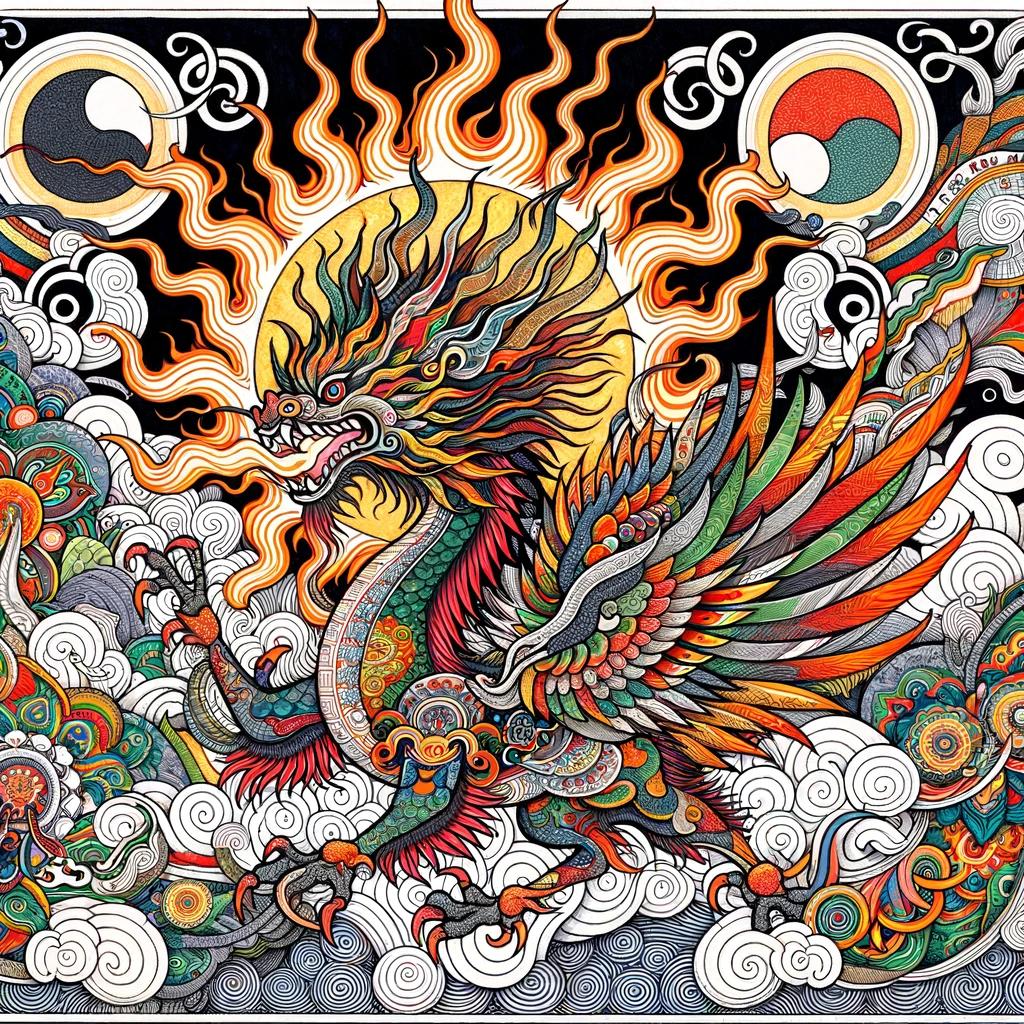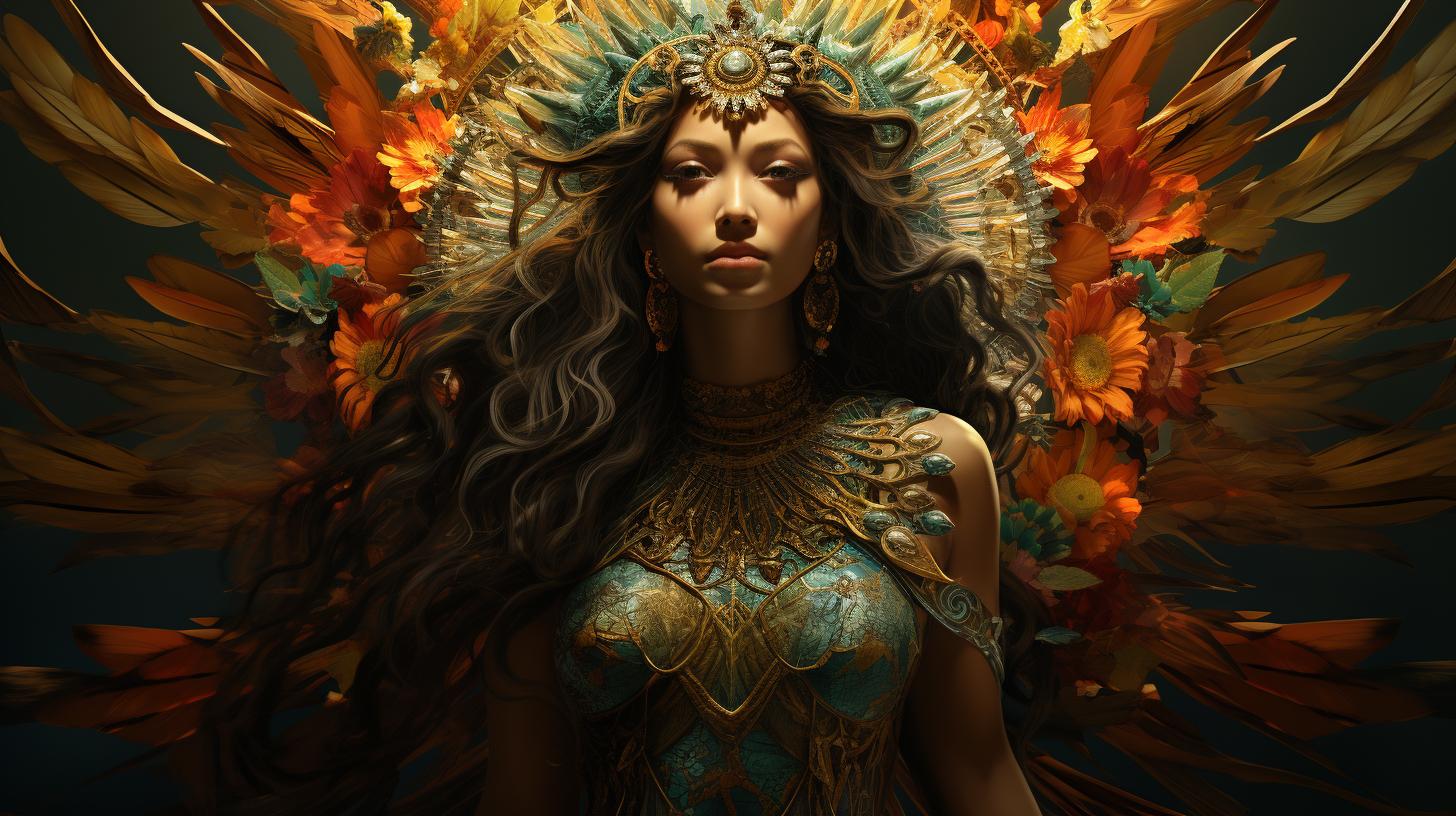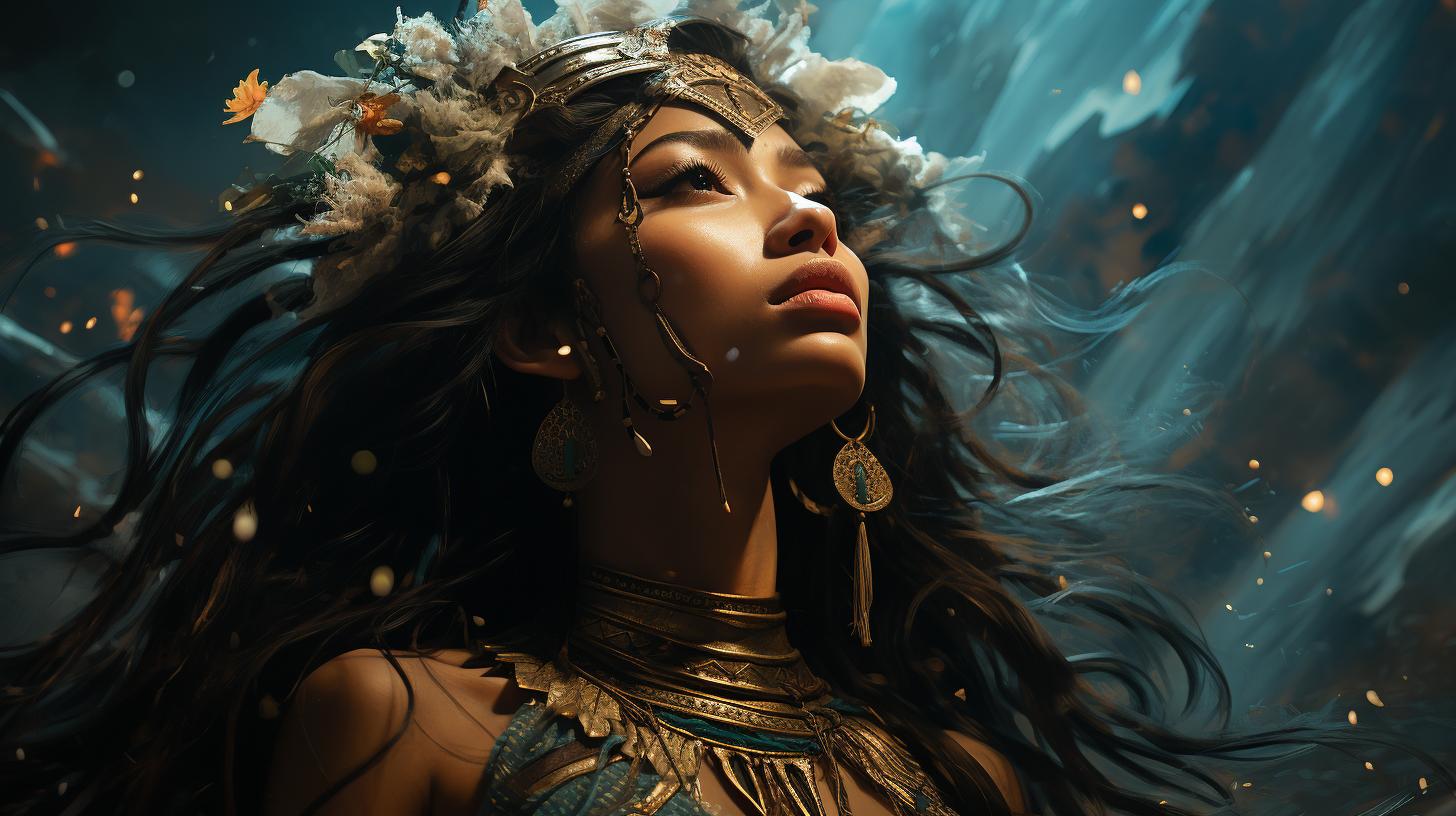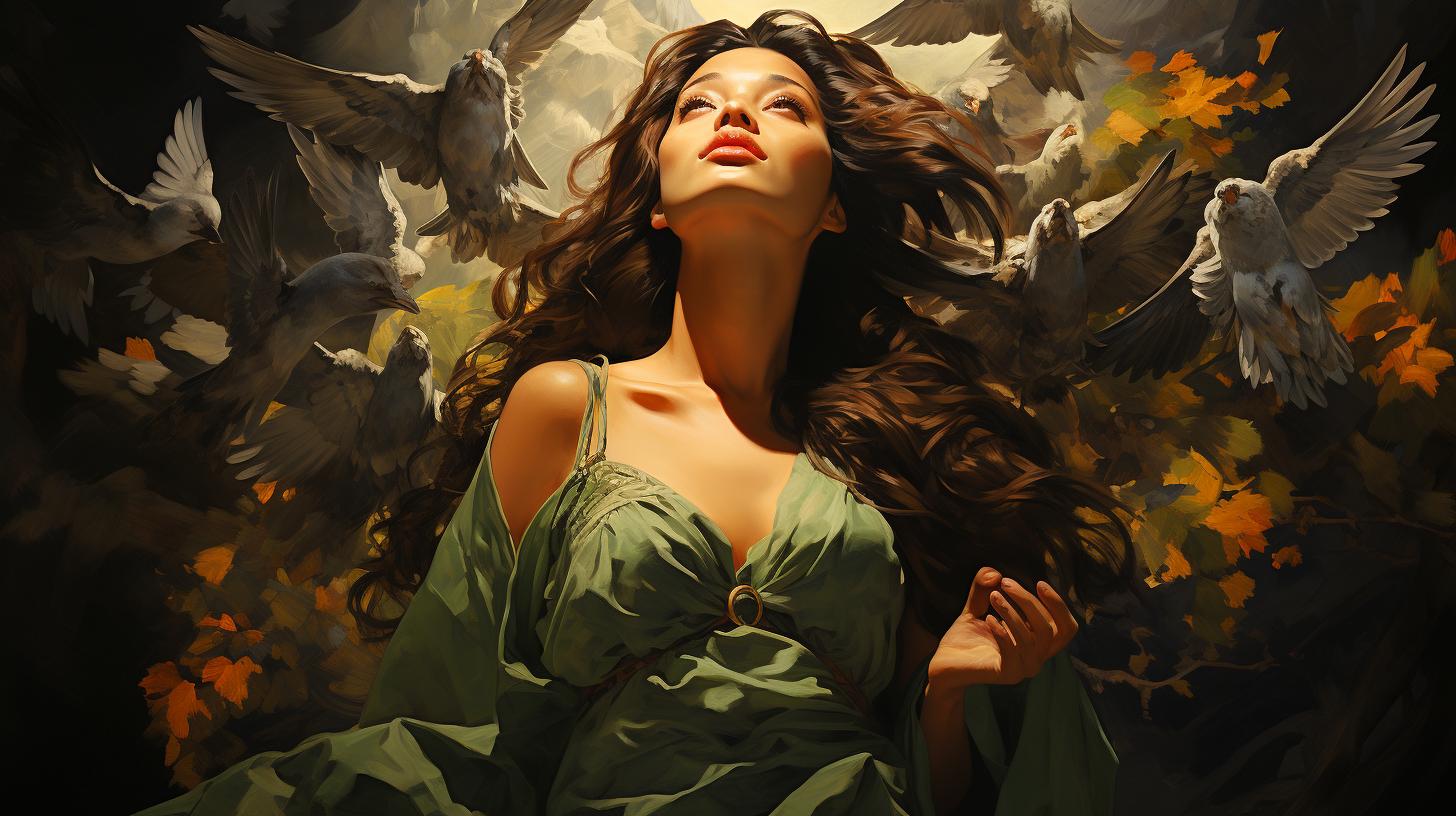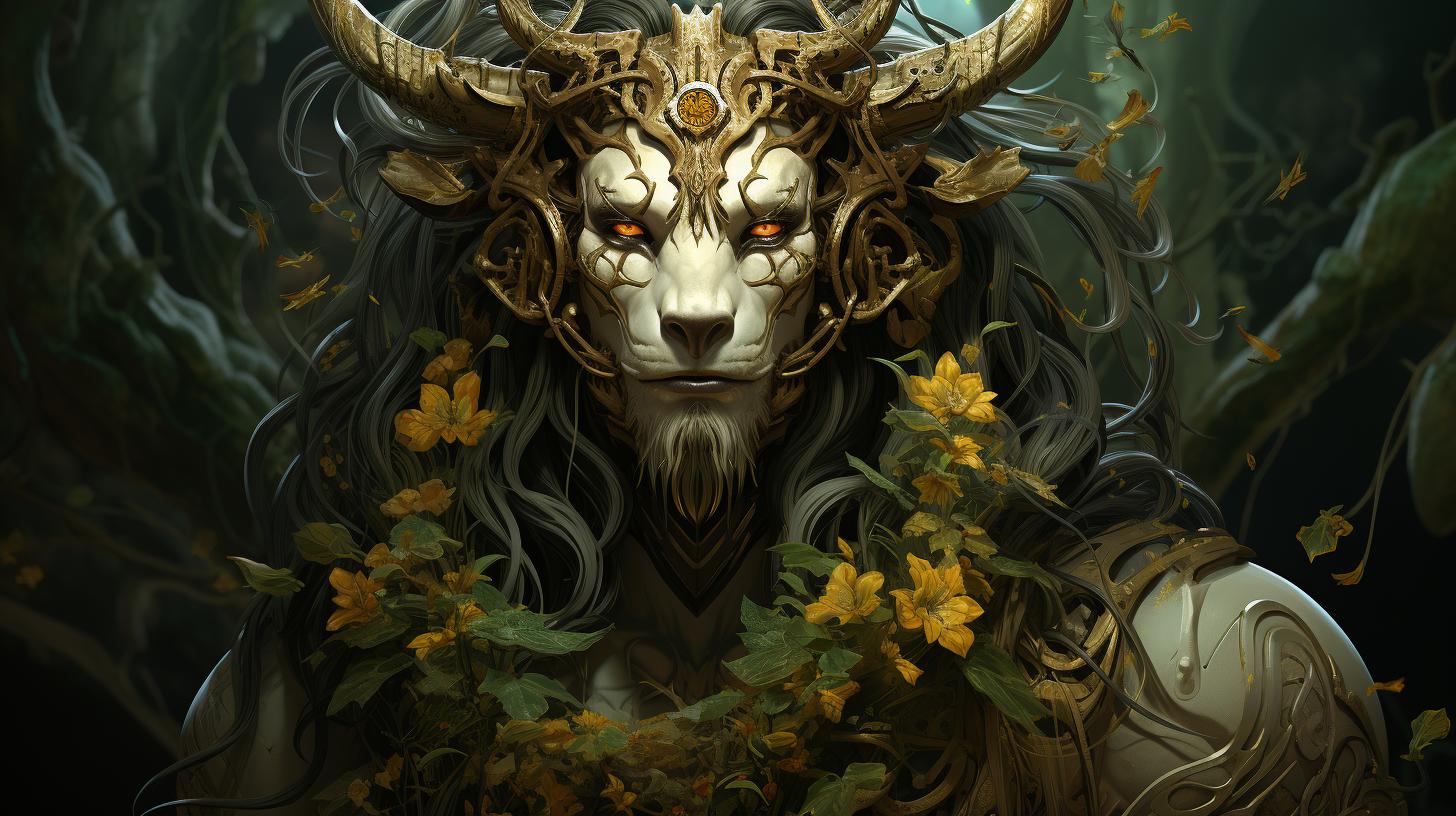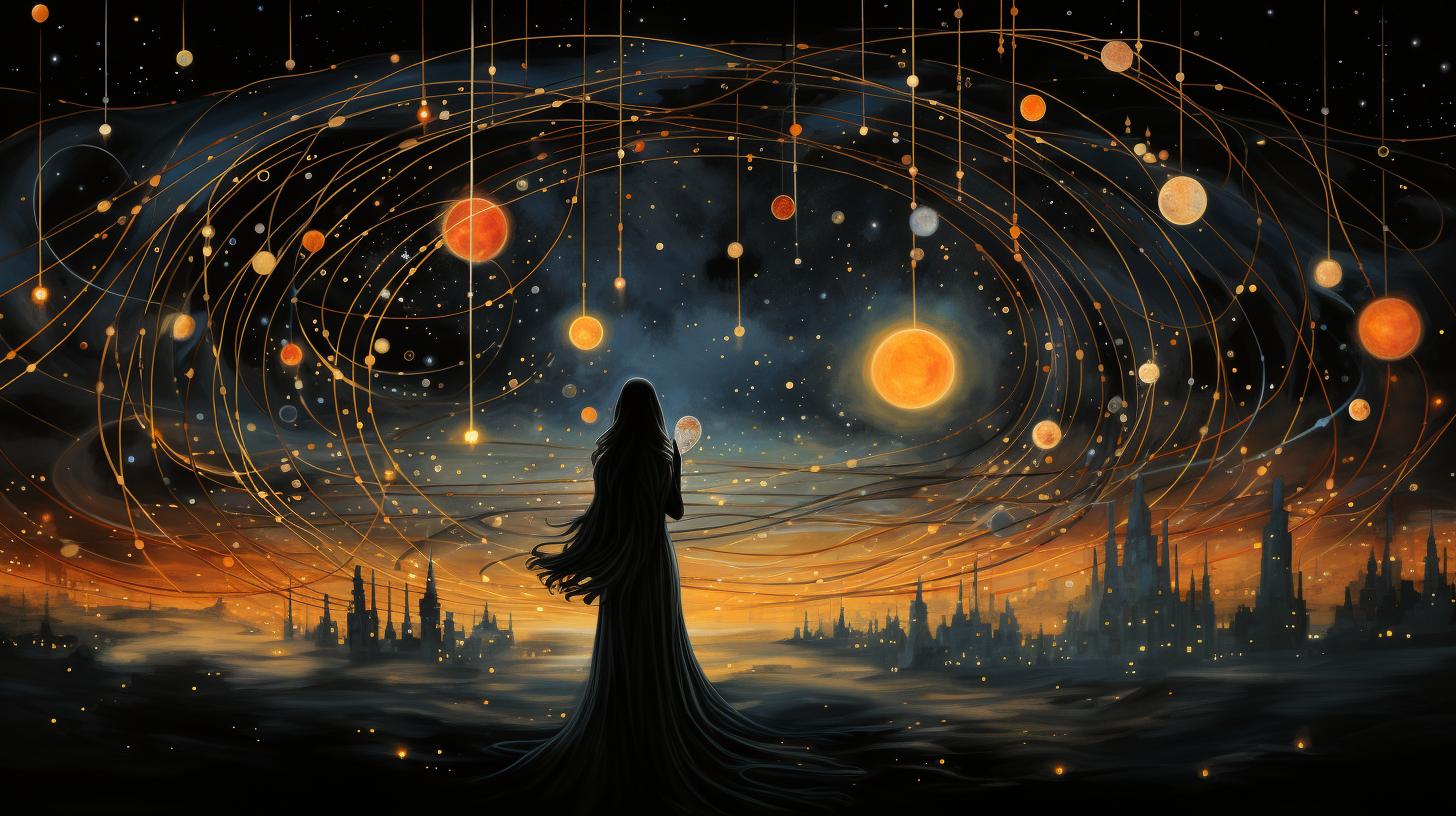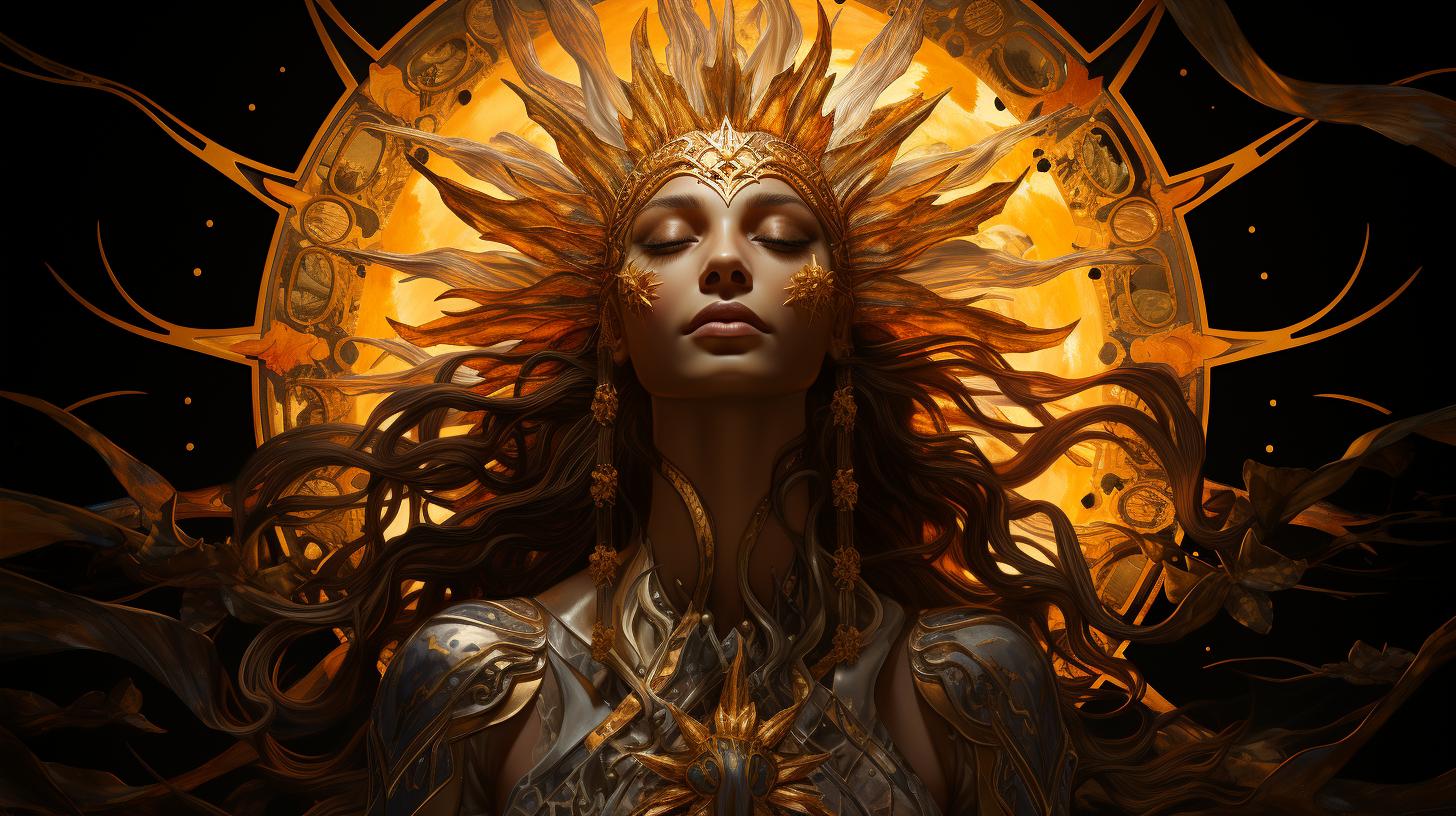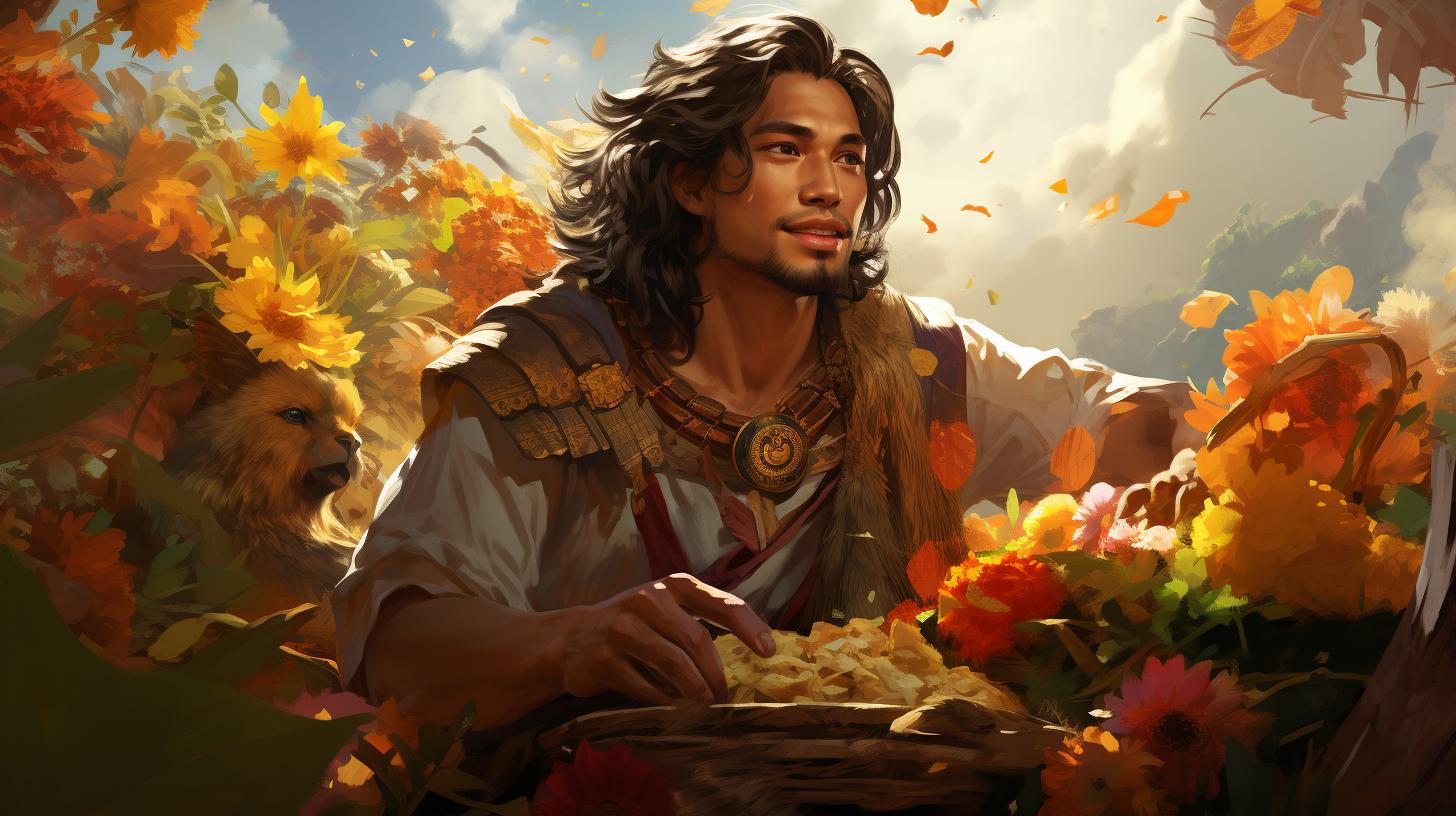Dallang Goddess of Beauty: Unveiling the Ancient Filipino Deity’s Power and Influence
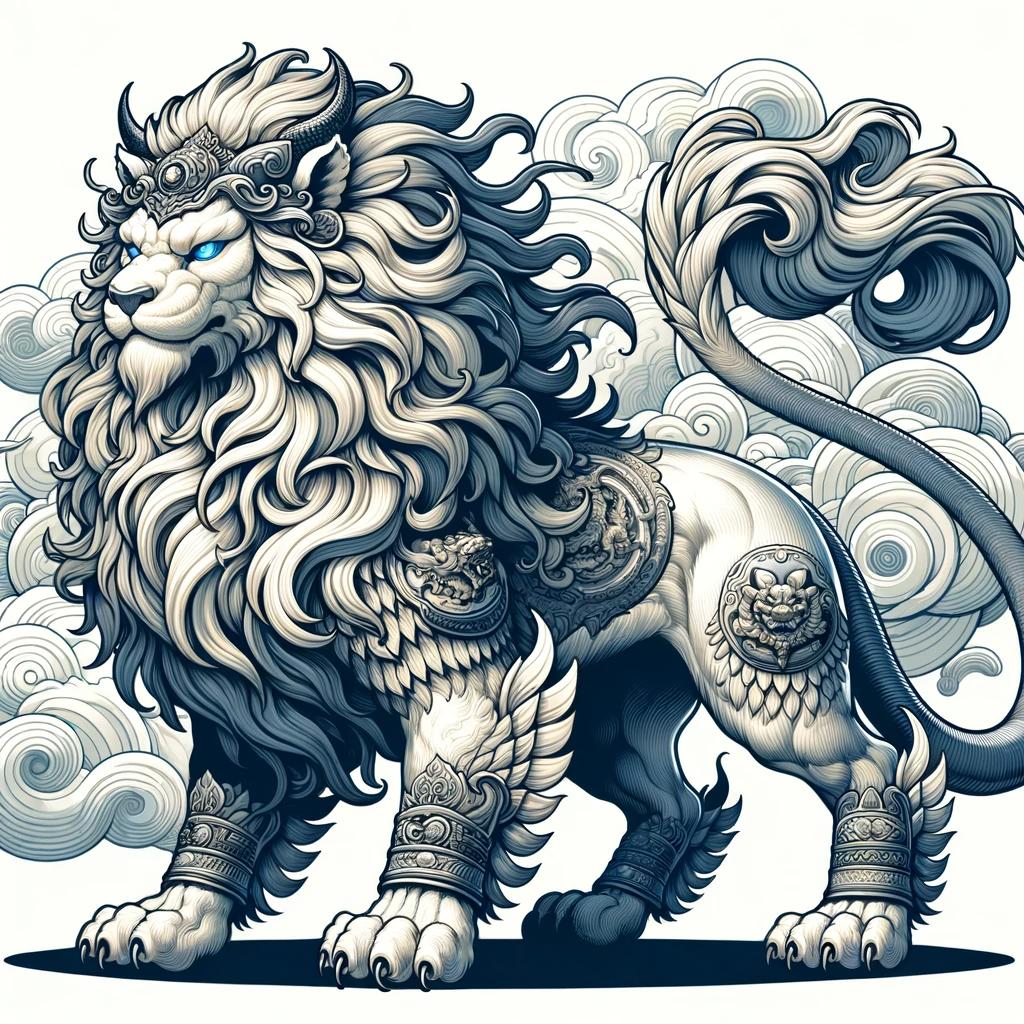
Dallang Goddess of Beauty is a prominent figure in Philippine mythology. Believed to grant beauty to her followers, Dallang holds a significant place in the country’s ancient beliefs and practices.
This article explores the origins and influence of Dallang, compares her with other beauty deities, and delves into the mythological beings associated with her. We also uncover the mysteries of Cebu’s mythological landscape and examine the legacy of Dallang in modern society.
Additionally, we delve into rituals, traditions, and debunk misconceptions surrounding this revered deity. Finally, we explore contemporary expressions of Dallang’s beauty and cultural significance.
Dallang Goddess of Beauty: Exploring the Mythology of the Philippines
Welcome to the captivating world of Dallang Goddess of Beauty, where mythology intertwines with cultural beliefs and practices.
In this section, we will delve into the origins and beliefs surrounding this intriguing deity, as well as the significance and influence of the Tagalog culture on Dallang. Furthermore, we will explore comparisons with other deities of beauty in Philippine mythology, offering a comprehensive understanding of Dallang’s place within this rich tapestry of divine figures.
The Origins and Beliefs Surrounding Dallang Goddess of Beauty
Unravel the ancient roots of Dallang Goddess of Beauty as we uncover her mythical origins and the intricate belief systems surrounding her worship. Explore the tales and legends that define her character, and gain insight into how she has become a symbol of beauty and grace in Philippine mythology.
Discover the rituals and traditions associated with paying homage to Dallang, and witness the profound impact she has on the lives of her devotees.
Significance and Influence of the Tagalog Culture on Dallang
Dive into the world of the Tagalog people and their deep connection to Dallang Goddess of Beauty.
Discover the cultural significance and profound influence that the Tagalog culture has had on the worship and perceptions of Dallang. Through exploring traditional practices, festivals, and artistic representations, we will uncover the unique ways in which the Tagalog people continue to honor and celebrate this captivating deity.
Comparisons with Other Deities of Beauty in Philippine Mythology
While Dallang Goddess of Beauty holds a prominent place in Philippine mythology, she is not the sole deity associated with beauty. In this section, we will compare and contrast Dallang with other deities of beauty from different regions of the Philippines.
By examining their characteristics, legends, and roles, we will gain a comprehensive perspective on the diverse manifestations of beauty in Philippine mythology.
The Ancient Filipino Pantheon: Deities and Spirits
The rich tapestry of Filipino mythology is woven with a diverse pantheon of deities and spirits, each holding a unique role and significance in the cultural beliefs of the ancient Filipinos.
This section explores the concepts of Anito and Diwata, the two core categories of divine beings in Filipino mythology, as well as delves into the realm of beauty deities, including Dallang and her counterparts.
Understanding the Concepts of Anito and Diwata in Filipino Mythology
In Filipino mythology, Anito refers to ancestral spirits, believed to have the power to influence the lives of their living descendants. They play a crucial role in maintaining harmony between the physical and spiritual realms.
On the other hand, Diwata represents a more ethereal category of deities, associated with nature, elements, and specific domains like beauty, love, and fertility. Both Anito and Diwata are revered and honored through rituals and offerings.
Dallang and Other Deities of Beauty in the Philippines
Dallang, the Goddess of Beauty, stands out among the pantheon of Filipino beauty deities. Revered for her ability to bestow beauty upon her devotees, she is celebrated for her grace, elegance, and allure.
Alongside Dallang, other deities of beauty exist within the Philippines’ diverse mythological landscape, each with their own unique attributes and influences. These deities represent the cultural appreciation and value placed on beauty throughout Filipino history.
The Role of Masalanta, the Goddess of Love and Fertility
While Dallang is associated with beauty, another notable deity in the Filipino pantheon is Masalanta, the Goddess of Love and Fertility. Masalanta holds a significant place in mythology as the protector of love, romance, and the well-being of relationships.
As a deity associated with both beauty and love, Masalanta’s role complements that of Dallang, highlighting the interconnectedness of these divine realms and their influence on human life.
Mythological Beings Associated with Dallang
Mythological Beings Associated with Dallang explores the diverse array of mythical beings present in the rich tapestry of Philippine folklore.
These beings are deeply intertwined with the realm of Dallang Goddess of Beauty and contribute to the captivating stories and beliefs surrounding her. Let’s delve into the mythical beings from different ethnic groups in the Philippines, the connection between Dallang and ethnolinguistic groups, and other deities and mythological figures linked to Dallang’s domain.
Exploring the Mythological Beings of Different Ethnic Groups in the Philippines
- The Ivatan Ethnic Group: Amplung, the guardian spirit of the forests and mountains.
- The Isneg Ethnic Group: Anyanya and Kayaw, shape-shifting deities associated with fertility and harvest.
- The Kalinga Ethnic Group: Kabunian, the supreme deity, and Kadaklan and Karit, deities of agriculture and war.
- The Ibanag Ethnic Group: Magbabaya, the supreme deity, and Pilumnay, the goddess of health and fertility.
- The Pangasinan Ethnic Group: Ama, the supreme deity, and Anagolay, the goddess of lost things.
- The Sambal Ethnic Group: Mangacha, the god of household chores and good fortune.
- The Aeta Ethnic Group: Pinuy-Utan and Mangati, goddesses associated with spirit communication and healing rituals.
- The Bicolano Ethnic Group: Gugurang, the supreme deity, and Haliya, the goddess of the moon and the bath.
- The Waray Ethnic Group: Libulan, the god of the moon and harvest, and Bakunawa, the moon-eating serpent.
- The Bisaya Ethnic Group: Kan-Laon, the supreme god of ancient Visayas, and Magwayen, the goddess of the underworld.
- The Ilonggo Ethnic Group: Laon, the god of all things, and Burok, the goddess of whirlwinds.
- The Kapampangan Ethnic Group: Aring Sinukuan, the god of mountains and forests, and Apung Sinukuan, the goddess of rice.
The Connection between Dallang Goddess of Beauty and Ethnolinguistic Groups
Each ethnolinguistic group in the Philippines has its own unique connection to Dallang Goddess of Beauty.
Through their myths, rituals, and beliefs, they invoke her power to bestow beauty upon their people. Dallang bridges the gap between diverse cultures, serving as a symbol of unity and shared reverence for beauty among the Philippines’ rich tapestry of ethnolinguistic groups.
Other Deities and Mythological Figures Linked to Dallang’s Domain
Besides Dallang Goddess of Beauty, there are other deities and mythological figures associated with her domain. These include Likabutan, Ladlaw, Libulan, Lisuga, Abba, Alunsina, Burigadang Pada Sinaklang Bulawan, Dalikamata, Halmista, Inaginid, Malanduk, Lalahon, Lubay-Lubyok Hanginun si Mahuyokhuyokan, Munsad Buralakaw, Nagined, Arapayan, Makbarubak, Paiburong, Pandaki, Sidapa, Siginarugan, Suimuran, Suiguinarugan, Suklang Malayon, and Tungkung Langit.
These entities intertwine their stories and powers with Dallang, contributing to the intricate tapestry of Philippine mythology.
Mythology in Cebu: Unveiling Hidden Stories
Cebu Province as the Epicenter of Philippine Mythology
Cebu province holds a significant place in Philippine mythology, serving as the epicenter of captivating stories and mystical folklore. Its rich cultural heritage is intertwined with the beliefs and practices of ancient civilizations that once thrived on the island.
With its strategic location and historical importance, Cebu became a melting pot of diverse cultural influences, contributing to the formation of unique mythological narratives.
Maria Cacao: The Mountain Goddess of Cebu and the Creation of Tableya
One fascinating deity linked to Cebu folklore is Maria Cacao, the mountain goddess associated with Mount Lantoy in Argao, Cebu.
According to local legends, she is the guardian of nature, cultivating the growth of cacao plants and bestowing blessings upon those who honor her.
Legend has it that Maria Cacao is the creator of tableya, a traditional ingredient used in the popular Filipino delicacies sikwate (hot chocolate) and champorado (chocolate rice porridge).
Her connection to the production of tableya showcases the long-standing tradition of cultivating cacao in the region.
The Intriguing History and Mysteries of Cebu’s Mythological Landscape
Exploring Cebu’s mythological landscape reveals a tapestry of captivating stories and intriguing mysteries. From tales of enigmatic creatures lurking in the forests to folklore surrounding ancient spirits and deities, there is no shortage of mysticism in this province.
Uncovering the hidden stories of Cebu’s mythology unravels the intricate web woven by its diverse ethnic groups and their beliefs. These narratives provide a glimpse into the collective imagination of the Cebuanos and their reverence for the supernatural.
In conclusion, within the realm of Cebu’s mythology lie untold stories of deities like Maria Cacao, whose influence on local traditions and practices permeates the cultural fabric of the province. Exploring these hidden tales and mystical landscapes unveils a captivating world filled with profound meanings and ancient wisdom.
The Legacy of Dallang and Her Perception in Modern Society
Dallang’s Influence on Filipino Culture and Beauty Standards
Dallang Goddess of Beauty holds a significant place in Filipino culture, shaping beauty standards and ideals. Her influence extends beyond physical appearance, encompassing the concept of inner beauty and self-care.
Filipinos value and appreciate the importance of personal grooming, skincare, and fashion, considering them an homage to Dallang’s grace and aesthetic delights. The admiration for Dallang’s beauty radiates in various aspects of daily life, from traditional attire choices to beauty rituals passed down through generations.
How Ancient Beliefs and Practices Shape Present-Day Spiritual Perspectives
Ancient beliefs and practices surrounding Dallang continue to impact present-day spiritual perspectives in the Philippines. Many Filipinos, influenced by indigenous traditions, maintain a strong connection with nature, seeing it as a manifestation of Dallang’s divine presence.
Rituals and ceremonies centered around beauty and self-care reflect the belief in preserving harmony and balance in both physical and spiritual realms. Dallang’s legacy serves as a reminder to embrace one’s natural beauty and find spiritual enlightenment through self-love and self-acceptance.
Revival of Indigenous Faiths and the Continued Relevance of Dallang Goddess of Beauty
In recent years, there has been a resurgence of interest and a revival of indigenous faiths in the Philippines, including the worship and reverence of Dallang Goddess of Beauty. Filipinos are reconnecting with their cultural roots, seeking solace and spiritual guidance in the traditions that have withstood the test of time.
The continued relevance of Dallang reflects a collective yearning for a deeper connection to ancestral wisdom and an appreciation for the diverse beauty that exists in the Filipino identity. As the revival of indigenous faiths continues, Dallang’s presence will persist in inspiring individuals to embrace their unique beauty and find strength in their cultural heritage.
Exploring Rituals and Traditions Associated with Dallang
Exploring the rich cultural heritage surrounding the worship of Dallang Goddess of Beauty unveils a world of sacred practices and rituals. This section delves into the various ways in which followers honor and pay tribute to this revered deity.
Sacred Practices and Offerings to Honor Dallang
The worship of Dallang involves a range of sacred practices that demonstrate devotion and respect for her divine presence. Followers often create altars adorned with flowers, candles, and other symbolic offerings as a way to connect with her beauty and seek her blessings.
These altars serve as physical representations of the spiritual relationship between Dallang and her devotees.
Prayer plays a central role in these sacred practices, with followers offering heartfelt supplications and expressing gratitude for Dallang’s blessings.
Through prayer, devotees seek guidance, protection, and the enhancement of their own inner beauty.
In addition to prayer, ceremonial dances and rituals are performed to honor Dallang. These dances are a way to embody her grace and beauty, providing a physical expression of devotion and reverence.
Celebrations and Festivals Centered Around Dallang and Beauty
Throughout the Philippines, various celebrations and festivals pay homage to Dallang and celebrate the concept of beauty. These colorful and vibrant events showcase the diverse ways in which Filipinos express their devotion to the goddess.
One of the most well-known celebrations is the Dallang Festival, held annually in honor of the goddess. It features elaborate parades, dance performances, beauty pageants, and artistic displays inspired by Dallang’s beauty and influence.
Other festivals may focus on specific aspects of beauty associated with Dallang, such as traditional fashion, cosmetics, or traditional arts and crafts. These celebrations serve as a reminder of the enduring cultural significance of beauty in Filipino society.
The Evolution of Beliefs and Practices: From Precolonial Times to the Present
The worship of Dallang and associated rituals have evolved over the centuries, shaped by historical events and cultural influences. From precolonial times to the present day, beliefs and practices surrounding Dallang have adapted and transformed.
Colonial influences, such as the introduction of Christianity, have influenced the way in which Dallang is worshipped. Syncretism between indigenous beliefs and Christian practices has created unique expressions of devotion to Dallang that reflect a blending of cultural influences.
In recent years, there has been a resurgence of interest in and a revival of indigenous faiths, including the worship of Dallang. This revival is fueled by a desire to reconnect with ancestral traditions and reclaim cultural heritage.
The evolution of beliefs and practices surrounding Dallang serves as a testament to the resilience and adaptability of Filipino culture and its commitment to preserving and honoring its ancient roots.
- Sacred Practices and Offerings to Honor Dallang
- Celebrations and Festivals Centered Around Dallang and Beauty
- The Evolution of Beliefs and Practices: From Precolonial Times to the Present
Debunking Myths and Misconceptions about Dallang
As with any ancient deity, Dallang Goddess of Beauty has been subject to misinterpretations and stereotypes over time.
In this section, we aim to address these myths and misconceptions, separating fact from fiction and shedding light on the true essence of Dallang.
Addressing Misinterpretations and Stereotypes Surrounding Dallang
There have been various misinterpretations surrounding Dallang Goddess of Beauty, leading to the perpetuation of stereotypes.
One common misconception is labeling her as a shallow deity solely focused on physical attractiveness. In reality, Dallang encompasses much more than surface beauty. She embodies the notion of inner beauty, emphasizing self-love, confidence, and radiance from within.
Another misinterpretation is associating Dallang solely with feminine beauty standards. While she is often depicted as a goddess of beauty, it is crucial to acknowledge the inclusive nature of beauty in the context of Philippine mythology.
Dallang’s influence extends to all genders, emphasizing the diversity and multifaceted nature of beauty among individuals.
By addressing these misinterpretations and stereotypes, we can gain a deeper understanding of the true significance and essence of Dallang Goddess of Beauty.
Frequently Asked Questions about Dallang Goddess of Beauty
- What are the origins of Dallang Goddess of Beauty?
- Does worshiping Dallang guarantee physical beauty?
- Are there any specific rituals associated with Dallang?
- How does Dallang’s role differ from other deities of beauty in Philippine mythology?
- Is beauty the only aspect of Dallang’s domain?
Separating Fact from Fiction: Understanding the True Essence of Dallang
To truly understand Dallang Goddess of Beauty, it is essential to separate fact from fiction.
By delving into the rich mythology and cultural context surrounding Dallang, we can uncover the true essence of her significance.
Dallang’s domain extends beyond physical beauty. She represents the concept of beauty as a holistic and spiritual expression, encompassing inner virtues, personal growth, and cultural identity.
Appreciating the true essence of Dallang allows us to embrace beauty in its diverse forms and challenge societal perceptions.
Separating fact from fiction is crucial in understanding and respecting the cultural heritage associated with Dallang Goddess of Beauty, empowering us to appreciate her true meaning in the context of ancient Filipino mythology and contemporary society.
Contemporary Expressions of Dallang’s Beauty
Inspirations from Dallang: Beauty Standards and Empowerment
Dallang, the embodiment of beauty in Philippine mythology, continues to inspire and influence contemporary beauty standards. Her graceful presence and timeless allure shape the perceptions of beauty in Filipino culture.
From her enchanting features to her ethereal radiance, Dallang serves as a muse for countless individuals seeking empowerment through their unique beauty. By embracing the essence of Dallang, individuals find the confidence to celebrate their diverse appearances and redefine societal beauty norms.
Dallang as a Symbol of Cultural Resilience and Identity
Dallang’s significance extends beyond physical beauty. She symbolizes the resilience and identity of Philippine culture. In a world influenced by globalization, embracing Dallang’s legacy helps preserve and promote Filipino traditions and values.
Celebrating the goddess of beauty fosters pride and connection to ancestral roots, reminding Filipinos of their cultural heritage. Dallang’s depiction in art, literature, and media serves as a powerful representation of the enduring spirit of the Filipino people.
Appreciating the Beauty in Diversity: Dallang’s Relevance in a Globalized World
In today’s interconnected world, Dallang’s relevance goes beyond national boundaries. She offers a profound lesson in appreciating the beauty of diversity. As society embraces inclusivity and cultural diversity, Dallang’s narrative serves as an inspiration to celebrate beauty in all its forms.
By recognizing the beauty within each individual, regardless of race, ethnicity, or background, we can foster a more harmonious and accepting world. Dallang’s story serves as a reminder to embrace the uniqueness and inherent beauty present in every human being.
- The enduring influence of Dallang in shaping modern beauty standards
- Dallang’s role in promoting cultural resilience and identity
- The relevance of Dallang’s message of appreciating diversity in today’s globalized society
.

